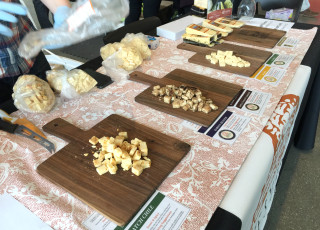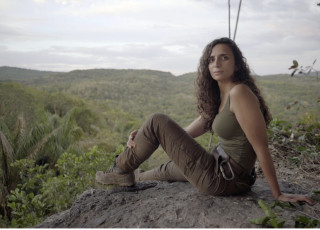Chocolate: The Exhibition
A unique tree in a lush tropical environment. A seed so precious it was used as money. A spicy drink and a sweet snack. A heavenly craving and a sublime pleasure. Chocolate is all this…and much more!
The Natural History Museum of Utah at Rio Tinto Center invites the public to explore the relationship between human culture and this rainforest treasure in Chocolate: The Exhibition now open through June 1, 2014.
The exhibition begins with the story of chocolate’s origin, from the seeds of the cacao tree in a tropical rainforest. From there visitors will learn about the plant, the products, the history and the culture of chocolate, through the lenses of botany and ecology, anthropology and economics, conservation and popular culture.
Visitors will see how sculpture and carved vessels, cacao seeds in dishes and chemical residue in pots helped scientists trace the roots of chocolate back almost 1,500 years ago to the ancient Maya civilization of Central America. The Maya were the first to turn the bitter seeds into a spicy drink for use in ceremonies and trade. Cacao was coveted by other cultures and soon became a valuable article of trade in the Aztec culture in 16th-century Mexico. An interactive Aztec marketplace shows visitors the purchasing power of a handful of beans.
“While many of us love chocolate, the history and impact on the world of this wonderful treat is fascinating,” commented Museum Gallery Programs Coordinator Paulmichael Maxfield. “We’re dedicated to providing world-class exhibits and programs for the public. And, this exhibit, as well as the various special public programs we are hosting, makes learning about chocolate fun and entertaining for all ages. What’s more, it’s calorie free to visit!”
Utah also has a special association with chocolate. It is the home of America’s earliest known chocolate. New research suggests Ancestral Puebloan people living in a village near Blanding, Utah consumed chocolate as early as 750 AD.
This renowned exhibit is on loan from The Field Museum, Chicago.
SPONSORS
Major sponsors for this exhibit include: Rio Tinto Kennecott, Sweet Candy Company, and the Sorenson Legacy Foundation. Supporting sponsors are Harmons Grocery and the National Science Foundation. Exhibit sponsors include Bing and Judy Fang, Emma Eccles Jones Foundation, and the JoAnne L. Shrontz Family Foundation.
ADMISSION
Basic Museum admission is $11 for adults, $9 for seniors and youths (ages 13-24) and $8 for children (ages 3-12). Admission is free for Museum members, University of Utah students, staff and faculty with ID and children 2 and under.
HOURS
The Natural History Museum of Utah is open from 10 a.m. to 5 p.m. daily except on Wednesdays when it closes at 9 p.m. However, the Museum will close early at 5 p.m. on Wednesdays, March 26 and April 30, for special events. For general Museum information call 801-581-4303.
LOCATION
The Natural History Museum of Utah is located at 301 Wakara Way, Salt Lake City, Utah 84108. For directions and alternate transportation visit www.nhmu.utah.edu/visit/directions
ABOUT THE NATURAL HISTROY MUSEUM OF UTAH
The Natural History Museum of Utah, the University of Utah, is one of the leading scientific research and cultural institutions in the Intermountain West. Established in 1963, the Museum cares for over 1.2 million objects and offers innovative exhibitions and educational programs to thousands of residents and visitors each year, including traveling and permanent exhibits, special events and other programs. The Museum also offers a variety of outreach programs to communities and schools throughout Utah, reaching every school district in the state annually. The Museum has an active research program with more than 30 scientists and 10 field expeditions each year.
Press contacts and links
-
Press Contact
Beth Mitchell



